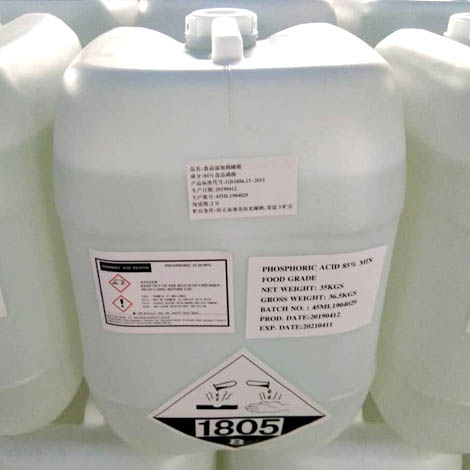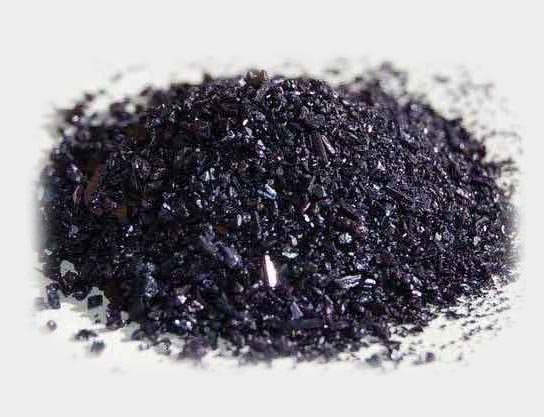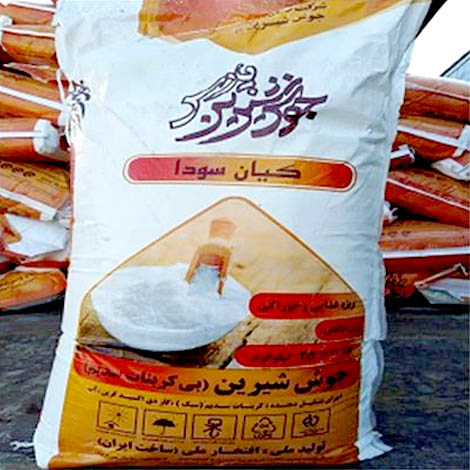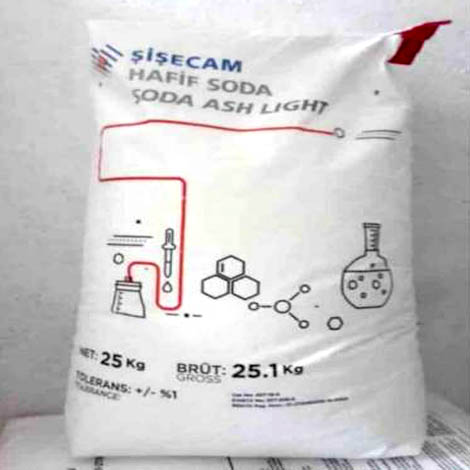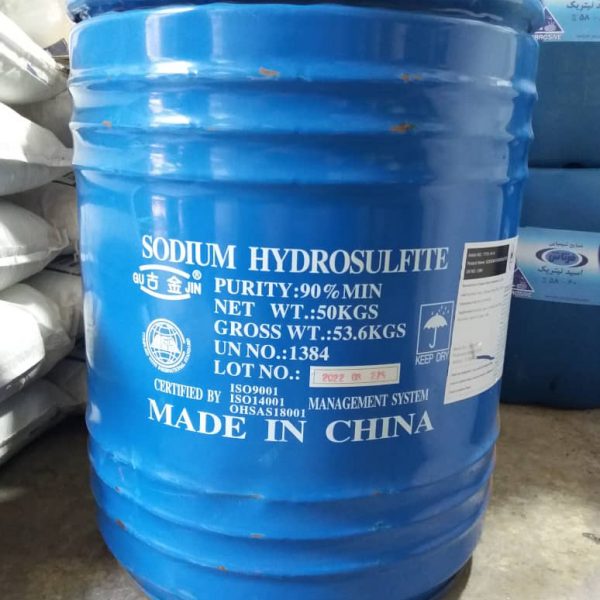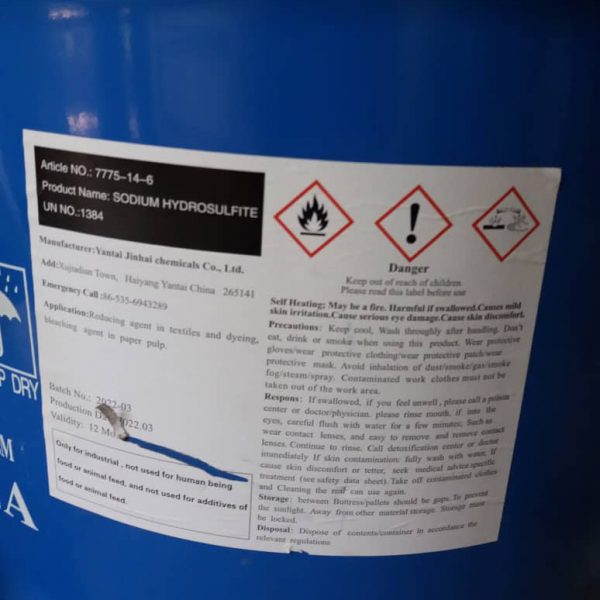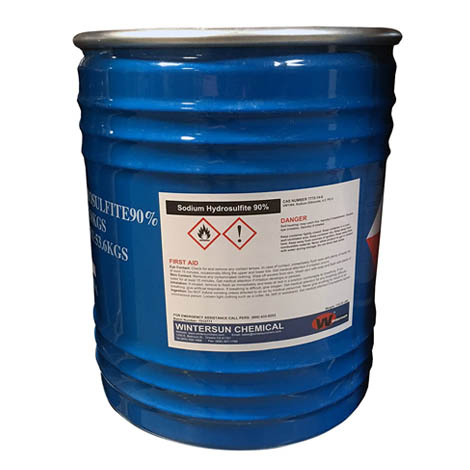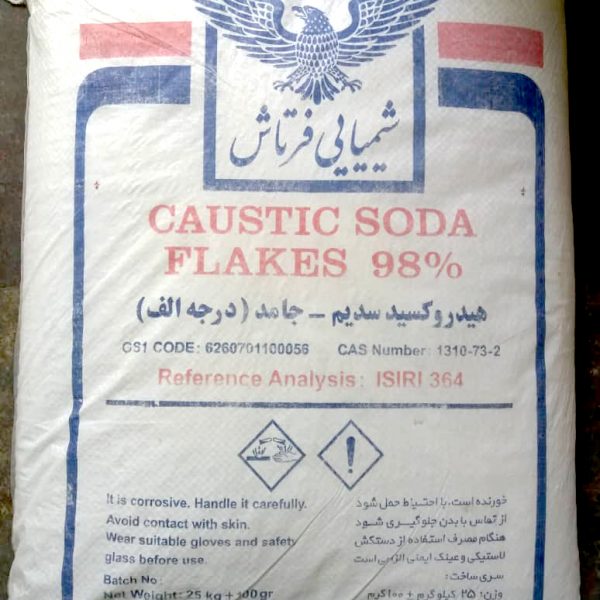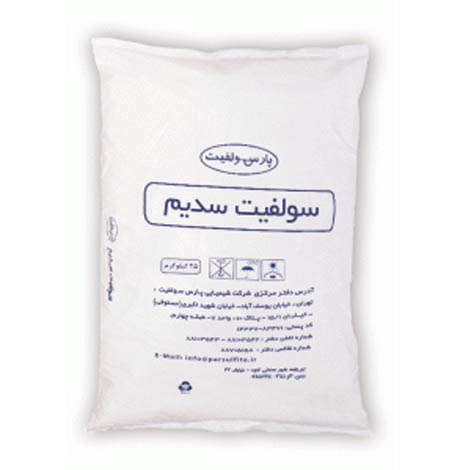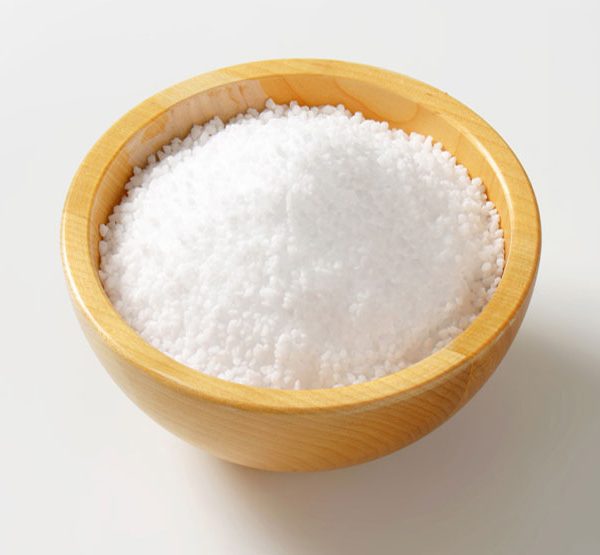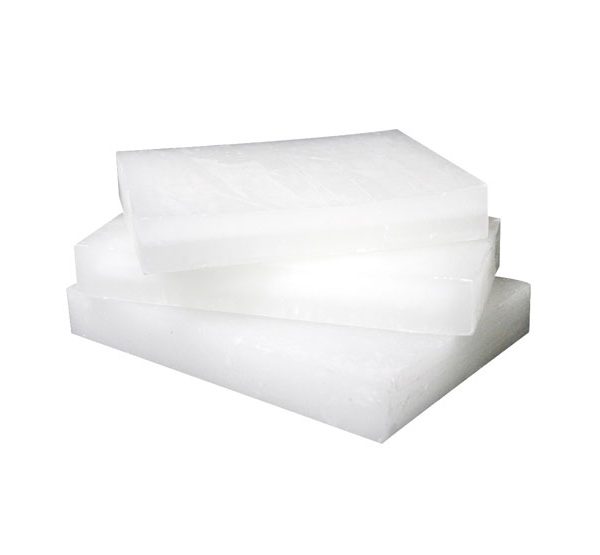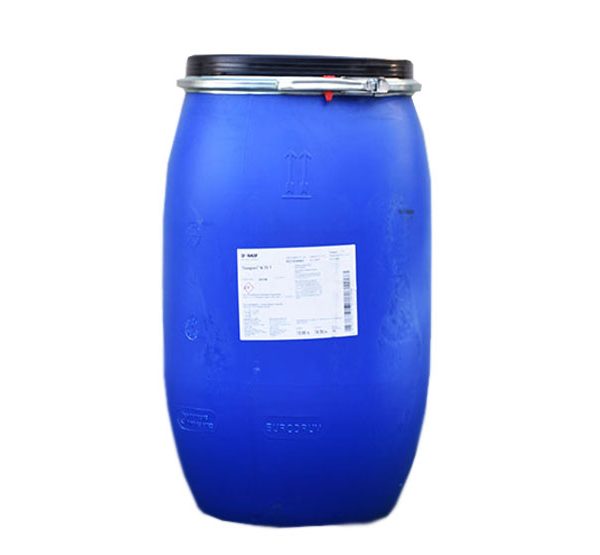Persian Calcium Hypochlorite 30Kg
Calcium oxychlorides
A confusion sometimes reigns between calcium oxychlorides and calcium hypochlorite. Indeed, the name calcium oxychloride (or calcium hydroxychloride) does not immediately refer to calcium hypochlorite, but is only applicable to the mixed calcium basic chloride compounds remaining unreacted in the bleaching powder, such as, e.g. CaCl2 · 2 Ca(OH)2.
Calcium oxychloride may also be formed in concrete in roads and bridges when calcium chloride is used as deicing agent during winter. Calcium chloride then reacts with calcium hydroxide (portlandite) present in cement hydration products and forms a deleterious expanding phase also named CAOXY (abbreviation for calcium oxychloride) by concrete technologists. The stress induced into concrete by crystallisation pressure and CAOXY salt expansion can considerably reduce the strength of concrete.
Chemical properties
Calcium hypochlorite exhibits both acido-basic and oxydo-reduction properties. It is a relatively strong base.
Calcium hypochlorite solution is basic as the hypochlorite anion can accept a proton from a water molecule leaving a hydroxyُl anion in solution. This basicity is due to the propensity for the hypochlorite anion to accept a proton to become hypochlorous acid, a weak acid:
- ClO− + H2O ↔ HClO + OH−
The hypochlorite anion is also a strong oxidizing agent containing a chlorine atom at the valence I (redox state: Cl+1) which reacts under acidic conditions with the reduced chloride species (Cl–, here the reducing agent) present in hydrochloric acid to form calcium chloride, water and gaseous chlorine. The overall reaction is:
- Ca(ClO)2 + 4 HCl → CaCl2 + 2 H2O + 2 Cl2
Phosphoric acid
Phosphoric acid, also known as orthophosphoric acid or phosphoric(V) acid, is a weak acid with the chemical formula H3PO4. It is normally encountered as a colorless syrup of 85% concentration in water. The pure compound is a colorless solid.
All three hydrogens are acidic to varying degrees and can be lost from the molecule as H+ ions (protons). When all three H+ ions are removed, the result is an orthophosphate ion PO43−, commonly called "phosphate". Removal of one or two protons gives dihydrogen phosphate ion H 2PO− 4, and the hydrogen phosphate ion HPO2− 4, respectively. Orthophosphoric acid also forms esters, called organophosphates.
Phosphoric acid is commonly encountered in chemical laboratories as an 85% aqueous solution, which is a colourless, odourless, and non-volatile syrupy liquid. Although phosphoric acid does not meet the strict definition of a strong acid, the 85% solution can still severely irritate the skin and damage the eyes.
Potassium carbonate
Potassium carbonate is the inorganic compound with the formula K2CO3. It is a white salt, which is soluble in water. It is deliquescent, often appearing as a damp or wet solid. Potassium carbonate is mainly used in the production of soap and glass.
History
Potassium carbonate is the primary component of potash and the more refined pearl ash or salts of tartar. Historically, pearl ash was created by baking potash in a kiln to remove impurities. The fine, white powder remaining was the pearl ash. The first patent issued by the US Patent Office was awarded to Samuel Hopkins in 1790 for an improved method of making potash and pearl ash.
In late 18th century North America, before the development of baking powder, pearl ash was used as a leavening agent for quick breads.
Potassium permanganate
Sanitary paraffin 175 kg barrel
Paraffin wax is mostly found as a white, odorless, tasteless, waxy solid, with a typical melting point between about 46 and 68 °C (115 and 154 °F), and a density of around 900 kg/m3. It is insoluble in water, but soluble in ether, benzene, and certain esters. Paraffin is unaffected by most common chemical reagents but burns readily. Its heat of combustion is 42 MJ/kg.
Paraffin wax is an excellent electrical insulator, with a resistivity of between 1013 and 1017 ohm metre. This is better than nearly all other materials except some plastics (notably Teflon). It is an effective neutron moderator and was used in James Chadwick's 1932 experiments to identify the neutron.
Paraffin wax is an excellent material for storing heat, with a specific heat capacity of 2.14–2.9 J g−1 K−1 (joules per gram kelvin) and a heat of fusion of 200–220 J g−1. Paraffin wax phase-change cooling coupled with retractable radiators was used to cool the electronics of the Lunar Roving Vehicle during the manned missions to the Moon in the early 1970s.Wax expands considerably when it melts and this allows its use in wax element thermostats for industrial, domestic and, particularly, automobile purposes.
Sodium bicarbonate
Sodium bicarbonate (IUPAC name: sodium hydrogen carbonate), commonly known as baking soda (especially in North America and New Zealand) or bicarbonate of soda, is a chemical compound with the formula NaHCO3. It is a salt composed of a sodium cation (Na+) and a bicarbonate anion (HCO3−). Sodium bicarbonate is a white solid that is crystalline, but often appears as a fine powder. It has a slightly salty, alkaline taste resembling that of washing soda (sodium carbonate). The natural mineral form is nahcolite. It is a component of the mineral natron and is found dissolved in many mineral springs
Sodium carbonate (Semnan)
Sodium carbonate, Na2CO3, (also known as washing soda, soda ash and soda crystals) is the inorganic compound with the formula Na2CO3 and its various hydrates. All forms are white, water-soluble salts. All forms have a strongly alkaline taste and give moderately alkaline solutions in water. Historically it was extracted from the ashes of plants growing in sodium-rich soils. Because the ashes of these sodium-rich plants were noticeably different from ashes of wood (once used to produce potash), sodium carbonate became known as "soda ash." It is produced in large quantities from sodium chloride and limestone by the Solvay process.
Main applications
In terms of its largest applications, sodium carbonate is used in the manufacture of glass, paper, rayon, soaps, and detergents.
Sodium carbonate (Turkey)
Sodium carbonate, Na2CO3, (also known as washing soda, soda ash and soda crystals) is the inorganic compound with the formula Na2CO3 and its various hydrates. All forms are white, water-soluble salts. All forms have a strongly alkaline taste and give moderately alkaline solutions in water. Historically it was extracted from the ashes of plants growing in sodium-rich soils. Because the ashes of these sodium-rich plants were noticeably different from ashes of wood (once used to produce potash), sodium carbonate became known as "soda ash." It is produced in large quantities from sodium chloride and limestone by the Solvay process.
Main applications
In terms of its largest applications, sodium carbonate is used in the manufacture of glass, paper, rayon, soaps, and detergents.
Sodium Hydrosulfite
Sodium dithionite (also known as sodium hydrosulfite) is a white crystalline powder with a weak sulfurous odor. Although it is stable in the absence of air, it decomposes in hot water and in acid solutions.
Structure
Raman spectroscopy and single-crystal X-ray diffraction studies reveal that the geometry of the dithionite anion is flexible. The dithionite dianion has C 2 symmetry, with almost eclipsed with a 16° O-S-S-O torsional angle. In the dihydrated form the dithionite anion has a shorter S-S bond length and a gauche 56° O-S-S-O torsional angle.
A weak S-S bond is indicated by the S-S distance of 239 pm. Because this bond is fragile, the dithionite anion dissociates in solution into the [SO2]− radical anion, as has been confirmed by EPR spectroscopy. It is also observed that 35S undergoes rapid exchange between S2O42− and SO2 in neutral or acidic solution, consistent with the weak S-S bond in the anion.
Preparation
Sodium dithionite is produced industrially by reduction of sulfur dioxide. Several methods are employed, including reduction with zinc powder, sodium borohydride, and formate. Approximately 300,000 tons were produced in 1990.
Sodium Hydrosulfite
Sodium dithionite (also known as sodium hydrosulfite) is a white crystalline powder with a weak sulfurous odor. Although it is stable in the absence of air, it decomposes in hot water and in acid solutions.
Structure
Raman spectroscopy and single-crystal X-ray diffraction studies reveal that the geometry of the dithionite anion is flexible. The dithionite dianion has C 2 symmetry, with almost eclipsed with a 16° O-S-S-O torsional angle. In the dihydrated form the dithionite anion has a shorter S-S bond length and a gauche 56° O-S-S-O torsional angle.
A weak S-S bond is indicated by the S-S distance of 239 pm. Because this bond is fragile, the dithionite anion dissociates in solution into the [SO2]− radical anion, as has been confirmed by EPR spectroscopy. It is also observed that 35S undergoes rapid exchange between S2O42− and SO2 in neutral or acidic solution, consistent with the weak S-S bond in the anion.
Preparation
Sodium dithionite is produced industrially by reduction of sulfur dioxide. Several methods are employed, including reduction with zinc powder, sodium borohydride, and formate. Approximately 300,000 tons were produced in 1990.
Sodium hydroxide
Pure sodium hydroxide is a colorless crystalline solid that melts at 318 °C (604 °F) without decomposition, and with a boiling point of 1,388 °C (2,530 °F). It is highly soluble in water, with a lower solubility in polar solvents such as ethanol and methanol.[14] NaOH is insoluble in ether and other non-polar solvents
Sodium metabisulfite
Sodium metabisulfite or sodium pyrosulfite (IUPAC spelling; Br. E. sodium metabisulphite or sodium pyrosulphite) is an inorganic compound of chemical formula Na2S2O5. The substance is sometimes referred to as disodium metabisulfite. It is used as a disinfectant, antioxidant, and preservative agent.
Preparation
Sodium disulfite can be prepared by treating a solution of sodium hydroxide with sulfur dioxide. When conducted in warm water, Na2SO3 initially precipitates as a yellow solid. With more SO2, the solid dissolves to give the disulfite, which crystallises upon cooling.
- SO2 + 2 NaOH → Na2SO3 + H2O
- SO2 + Na2SO3 → Na2S2O5
which yields a residue of colourless solid Na2S2O5.
Sodium sulfite
Sodium sulfite (sodium sulphite) is the inorganic compound with the chemical formula Na2SO3. A pale yellow, water-soluble solid, it is used commercially as an antioxidant and preservative. A heptahydrate is also known but it is less useful because of its greater susceptibility toward oxidation by air.
Preparation
Sodium sulfite can be prepared by treating a solution of sodium hydroxide with sulfur dioxide. When conducted in warm water, Na2SO3 initially precipitates as a yellow solid. With more SO2, the solid dissolves to give the disulfite, which crystallizes upon cooling.
- SO2 + 2 NaOH → Na2SO3 + H2O
Sodium sulfite is made industrially by treating sulfur dioxide with a solution of sodium carbonate. The overall reaction is:
- SO2 + Na2CO3 → Na2SO3 + CO2
Sodium Tetraborate
Borax, also known as sodium borate, sodium tetraborate, or disodium tetraborate, is a compound with formula Na 2H4B4O9•nH2O or, more precisely, [Na•(H2O)+m]2 [B4O5(OH)2−4].
The formula is often improperly written as Na 2B4O7•(n+2)H2O, reflecting an older incorrect understanding of the anion's molecular structure. The name may refer to any of a number of closely related boron-containing mineral or chemical compounds that differ in their water of crystallization content. The most commonly encountered one is the octahydrate Na 2H4B4O9•8H2O or [Na(H2O)+4]2 [B4O5(OH)2−2] (or Na2B4O7•10H2O, the "decahydrate", in the older notation). It is a colorless crystalline solid that dissolves in water.
Borax is a component of many detergents, cosmetics, and enamel glazes. It is used to make buffer solutions in biochemistry, as a fire retardant, as an anti-fungal compound, in the manufacture of fiberglass, as a flux in metallurgy, neutron-capture shields for radioactive sources, a texturing agent in cooking, as a cross-linking agent in slime, as an alkali in photographic developers, as a precursor for other boron compounds, and is useful as an insecticide (similarly to boric acid).
Sodium triphosphate STPP
Sodium triphosphate (STP), also sodium tripolyphosphate (STPP), or tripolyphosphate (TPP),) is an inorganic compound with formula Na5P3O10. It is the sodium salt of the polyphosphate penta-anion, which is the conjugate base of triphosphoric acid. It is produced on a large scale as a component of many domestic and industrial products, especially detergents. Environmental problems associated with eutrophication are attributed to its widespread use
Uses
In detergents
The majority of STPP is consumed as a component of commercial detergents. It serves as a "builder," industrial jargon for a water softener. In hard water (water that contains high concentrations of Mg2+ and Ca2+), detergents are deactivated. Being a highly charged chelating agent, TPP5− binds to dications tightly and prevents them from interfering with the sulfonate detergent.
Solid paraffin
Paraffin wax (or petroleum wax) is a soft colorless solid derived from petroleum, coal or shale oil that consists of a mixture of hydrocarbon molecules containing between twenty and forty carbon atoms. It is solid at room temperature and begins to melt above approximately 37 °C (99 °F), and its boiling point is above 370 °C (698 °F). Common applications for paraffin wax include lubrication, electrical insulation, and candles; dyed paraffin wax can be made into crayons. It is distinct from kerosene and other petroleum products that are sometimes called paraffin.
Un-dyed, unscented paraffin candles are odorless and bluish-white. Paraffin wax was first created by Carl Reichenbach in Germany in 1830 and marked a major advancement in candlemaking technology, as it burned more cleanly and reliably than tallow candles and was cheaper to produce.
In chemistry, paraffin is used synonymously with alkane, indicating hydrocarbons with the general formula CnH2n+2. The name is derived from Latin parum ("barely") + affinis, meaning "lacking affinity" or "lacking reactivity", referring to paraffin's unreactive nature.
Sulfammon Granular Ammonium Sulfate
Ammonium sulfate [(NH₄)₂ SO₄] was one of the first and most widely used nitrogen (N) fertilizers for crop production. It’s now less common but especially valuable where both N and sulfur (S) are required. Its high solubility provides versatility for a number of agricultural applications.
Production
Ammonium sulfate (sometimes abbreviated as AS or AMS) has been produced for more than 150 years. Initially, it was made from ammonia released during manufacturing coal gas (used to illuminate cities) or from coal coke used to produce steel. Today, manufacturers make it by reacting sulfuric acid with heated ammonia. To get the crystal size best suited for the application, they control the reaction conditions by screening and drying the particles until achieving the desired size. Some materials are coated with a conditioner to reduce dust and caking.
Byproducts from various industries meet most of the current demand for ammonium sulfate. For example, the nylon manufacturing process produces ammonium sulfate as a co-product. In another, certain byproducts that contain ammonia or spent sulfuric acid are commonly converted to ammonium sulfate for use in agriculture.
Although the color can range from white to beige, ammonium sulfate is consistently sold as a highly soluble crystal with excellent storage properties. As described earlier, particle size can also vary depending on the intended purpose.
Sulfuric acid
Sulfuric acid (American spelling) or sulphuric acid (British spelling), also known as oil of vitriol, is a mineral acid composed of the elements sulfur, oxygen and hydrogen, with molecular formula H2SO4. It is a colourless, odourless, and viscous liquid that is soluble in water and is synthesized in reactions that are highly exothermic.
Its corrosiveness can be mainly ascribed to its strong acidic nature, and, if at a high concentration, its dehydrating properties. It is also hygroscopic, readily absorbing water vapor from the air. Upon contact, sulfuric acid can cause severe chemical burns and even secondary thermal burns; it is very dangerous even at lower concentrations.
Sulfuric acid is a very important commodity chemical, and a nation's sulfuric acid production is a good indicator of its industrial strength. It is widely produced with different methods, such as contact process, wet sulfuric acid process, lead chamber process and some other methods.
Sulfuric acid is also a key substance in the chemical industry. It is most commonly used in fertilizer manufacture, but is also important in mineral processing, oil refining, wastewater processing, and chemical synthesis. It has a wide range of end applications including in domestic acidic drain cleaners, as an electrolyte in lead-acid batteries, in dehydrating a compound, and in various cleaning agents.
texapon n70
Sodium lauryl ether sulfate is commercially known as Texapone and belongs to the aclyl ether sulfate family. This product is a mixture of a fatty alcohol such as coconut oil with ethylene oxide and sulfonation after it.
Texapone Types:
Texapone is available in two forms of N70 and scale.
Scale Texapone has a lower purity and is used in scale and dark detergents like shampoos.
The paste-like Texapone N70 is also of a high-viscosity and is used to produce transparent detergent liquids.
It has a small amount of salt and, when diluted in water, has normal concentration and low viscosity.
When sodium chloride and alkanol amide is added to it, its viscosity is adjusted.
Texas Shellfish 60 kg
Sodium lauryl ether sulfate is commercially known as Texapone and belongs to the aclyl ether sulfate family. This product is a mixture of a fatty alcohol such as coconut oil with ethylene oxide and sulfonation after it.
Texapone Types:
Texapone is available in two forms of N70 and scale.
Scale Texapone has a lower purity and is used in scale and dark detergents like shampoos.
The paste-like Texapone N70 is also of a high-viscosity and is used to produce transparent detergent liquids.
It has a small amount of salt and, when diluted in water, has normal concentration and low viscosity.
When sodium chloride and alkanol amide is added to it, its viscosity is adjusted.





